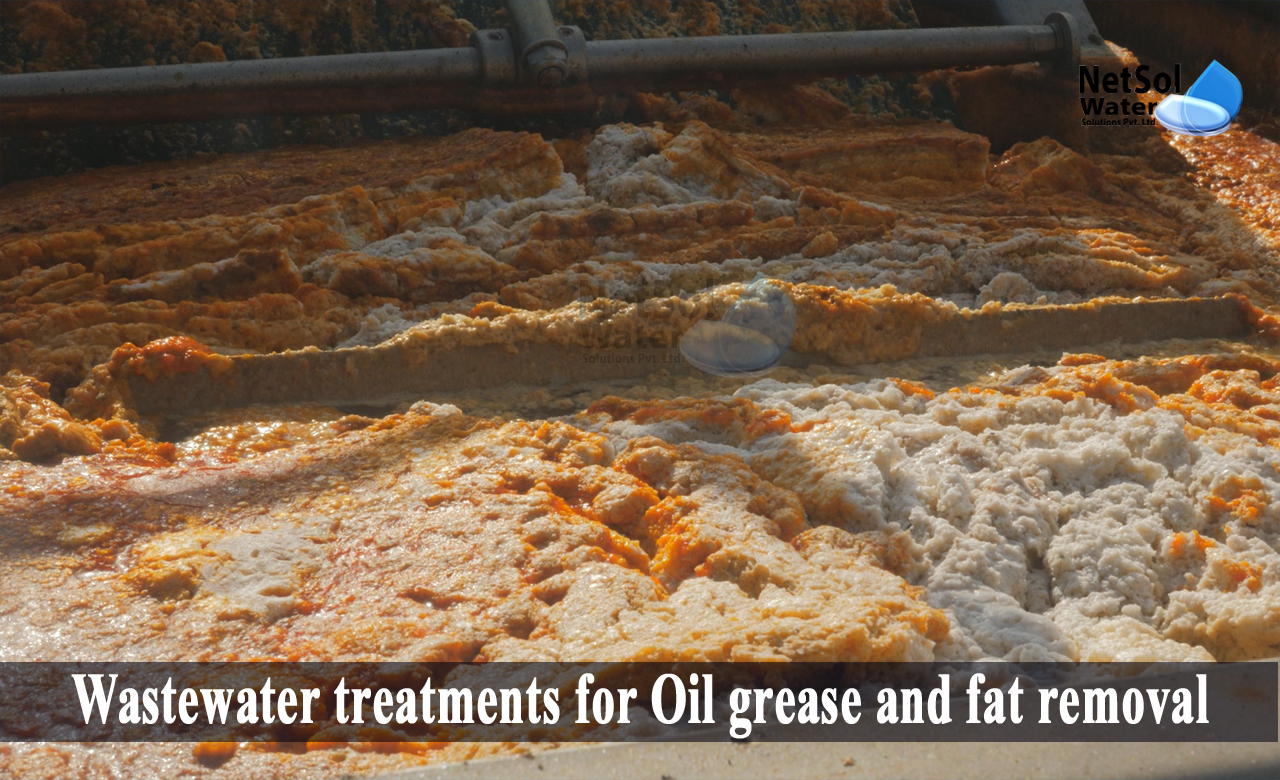FOG is a by-product of cooking foods such as vegetable oils, meats, and dairy products. FOG can enter the sewer system during cleaning processes from Food Service Establishments, such as restaurants, takeaways, and pubs.
When FOG is hot, it easily enters sinks and drains; however, when FOG cools, it solidifies, clogging and damaging pipes and causing problems during the wastewater treatment process.
In this article, we will enlist some procedures to oil, grease and fat removal from wastewater.
Why is FOG (fat, oil and grease) challenging?
In raw wastewater flowing into municipal wastewater treatment plants, FOG accounts for 25-35% of total chemical oxygen demand (COD). Although, they are frequently used interchangeably, triglycerides that remain liquid at room temperature are referred to as "oil," whereas fats, oils, waxes, and soaps that clog pipes are referred to as "grease."
It can coagulate with other materials to form massive "fatbergs" that block sewer mains.
How to remove FOG (Oil grease and fat) in Wastewater treatments?
· Removal at the source
FOG control at source is the most effective method. Many Food Service Establishments use a passive grease interceptor unit installed, in the kitchen greywater outlet to separate FOG from the restaurant's sullage.
The brown grease that has accumulated in the trap or GI must be disposed of properly. Grease interceptors must be emptied and cleaned on a regular basis, in order to function properly.
· Drainage removal
It must be manually eliminated if it has accumulated in the sewer system. Because, of their proximity to residential, commercial, or industrial areas; the characteristics of the sewer pipe, such as its diameter or condition; and the characteristics of the sewer network, such as the number of inflows and effluent volume, the locations will be more prone to FOG blockages.
When pipe repairs or changes to cleaning and maintenance are ineffective, manual collection, which require a large number of people and poses health and safety risks, maybe the only option.
· Removal at Wastewater Treatment Plants
Traditionally, FOG removal at wastewater treatment plants has involved the addition of biological additives, to break down and consume grease build-up.
Bioaugmentation is a process that uses bacteria-forming enzymes to break the bond, between glycerol and fatty acids. These elements can then be disposed of through biodegradation, in which bacteria and microorganisms feed on fat, sugar, and starch wastes.
Long-term bioaugmentation typically necessitates the regular injection of specialized organisms, as introduced organisms do not keep up with the main population of a system.
Methods for eliminating FOG
· Gravity separation
Gravity separation is commonly used to remove insoluble FOG, whereas biological processes are more commonly used to remove soluble compounds.
· Dissolved air flotation
Dissolved air flotation (DAF) combined with coagulation and flocculation is a common pretreatment, to reduce FOG load before biological treatment.
In DAF, colloids are destabilized and broken down into small particles using iron chloride or aluminium polychloride. The particles are then coagulated into larger "flocs" by polyelectrolytes. The flocs are then adhered to and float to the surface by the introduction of air bubbles. Finally, the surface sludge is mechanically skimmed.
Other processes for FOG removal include:
· Coagulation with alum and ferric chloride.
· Sulphuric acid or hydrochloric acid treatment at pH-3.
· Activated sludge and membrane processes.
· Up-flow anaerobic sludge blanket (UASB) reactor.
· Adsorption.
· Ionizing radiation.
Which industries must eliminate fat, oil, and grease (FOG)?
FOG must be removed from wastewater in the oil refining, meat, dairy, and food processing industries. Many industries chose to eliminate FOG on-site in order to meet environmental discharge standards, or reduce municipal disposal costs.
Some factories send their wastewater to municipal treatment plants to remove FOG, but this is costly. Instead, for many industries, on-site treatment is becoming an increasingly appealing option.
Conclusion
While, high FOG presents numerous challenges in wastewater treatment, it does have one advantage:
Because, of its high organic load, it is ideal for waste-to-energy systems. Food production wastewater can carry ten times the organic load of ordinary municipal wastewater, which already contains roughly five times the energy required to treat it.
When anaerobic digestion (AD) is added to wastewater treatment, biogas is produced that can be sold or used to power operations.
How can we assist?
Netsol Water has decades of experience deploying cost-effective and sustainable DAF, biological, membrane, and waste-to-energy systems, around the world. Contact us to discuss a FOG removal process tailored to your operation's specific wastewater stream, and regulatory requirements.
Netsol Water is Greater Noida-based leading water & wastewater treatment plant manufacturer. We are industry's most demanding company based on client review and work quality. We are known as best commercial RO plant manufacturers, industrial RO plant manufacturer, sewage treatment plant manufacturer, Water Softener Plant Manufacturers and effluent treatment plant manufacturers. Apart from this 24x7 customer support is our USP. Call on +91-9650608473, or write us at enquiry@netsolwater.com for any support, inquiry or product-purchase related query.



